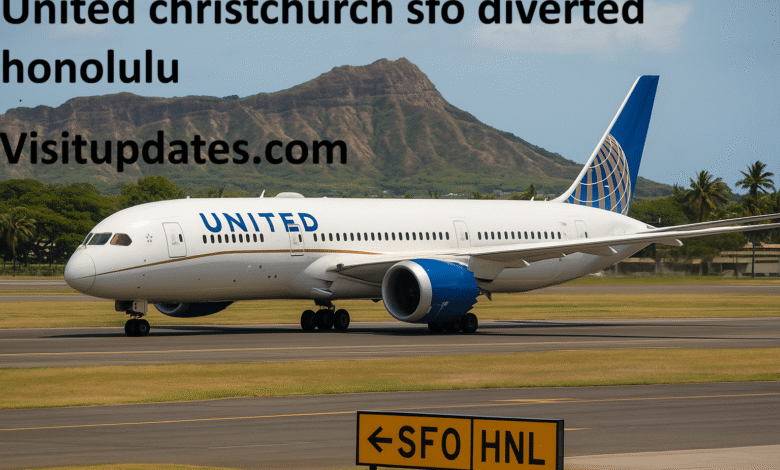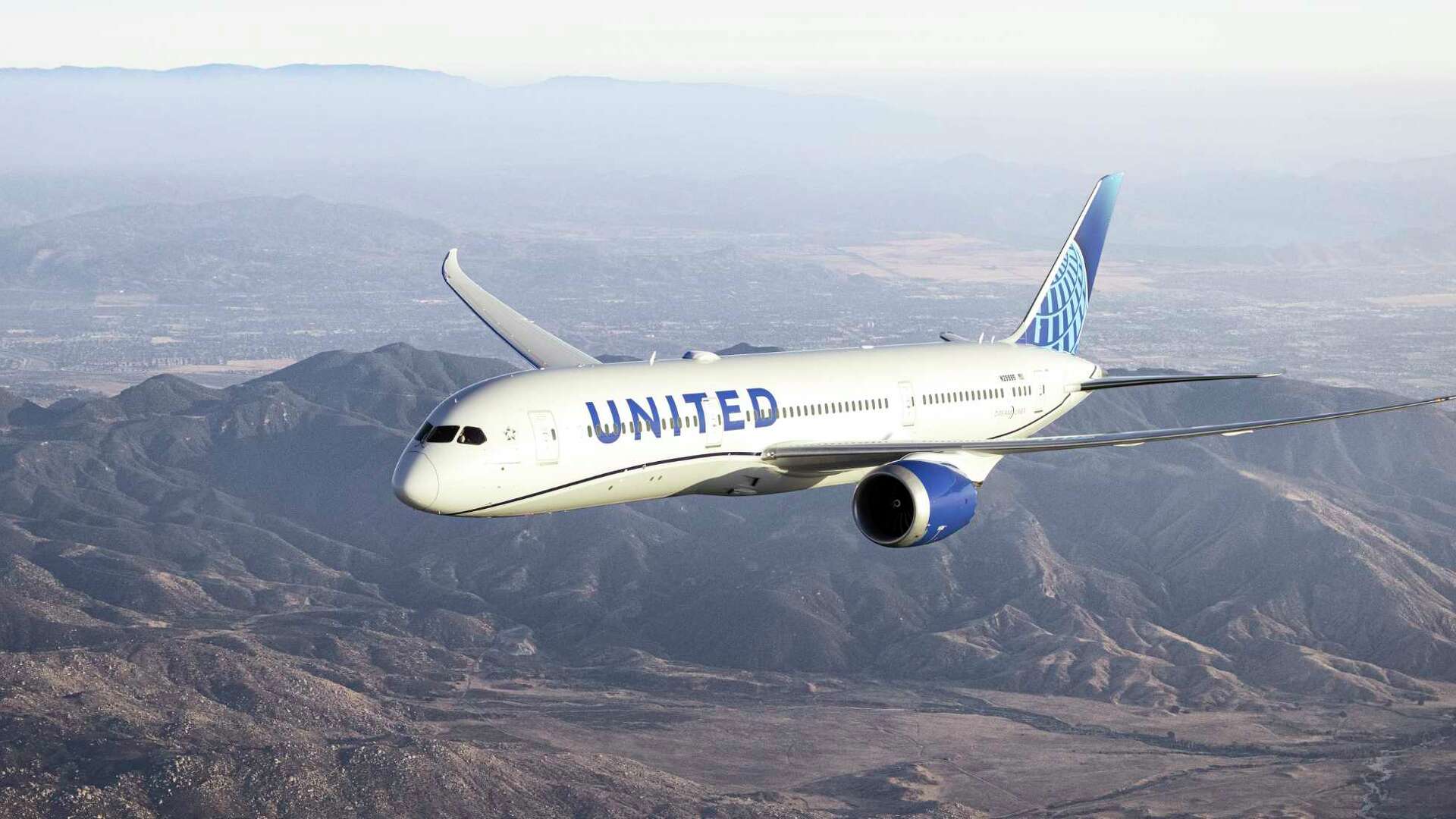United Christchurch SFO Diverted Honolulu – Inside the Flight Diversion That Shocked Travelers

When passengers boarded United Christchurch SFO Diverted Honolulu Flight UA731 from Christchurch, New Zealand, they expected a direct journey to San Francisco. Instead, they found themselves experiencing an unexpected detour that would turn their 13-hour flight into a multi-day ordeal. This incident, which occurred just days after United resumed its only direct route between the United States and New Zealand’s South United Christchurch SFO Diverted Honolulu Island, highlights the complexities of modern air travel and the various factors that can disrupt even the most carefully planned flights.
The Flight That Started With High Hopes
United Airlines had just celebrated the resumption of its nonstop service between Christchurch International Airport and San Francisco International Airport on December 6, 2024. This route represented a significant milestone for both cities, serving as a crucial connection for business travelers, tourists, and those with family ties across the Pacific. The flight was operated using a Boeing 787-8 Dreamliner, a modern wide-body aircraft designed specifically for long-haul international routes. Airport officials in Christchurch were thrilled United Christchurch SFO Diverted Honolulu about the renewed service, emphasizing its importance for exporters and its role in supporting Antarctic operations based in the southern New Zealand city.
However, just four days after the route’s triumphant return, Flight UA731 encountered issues that would leave 203 passengers and 13 crew members stranded thousands of miles from their intended destination. The flight departed Christchurch on Monday, December 9, 2024, at 7:16 PM local time, right on schedule for what should have United Christchurch SFO Diverted Honolulu been a straightforward transpacific journey.
What Went Wrong Mid-Flight
As Flight UA731 cruised over the vast Pacific Ocean, approximately halfway through its planned 13-hour and 10-minute journey, the flight crew made the decision to divert to Daniel K. Inouye International Airport in Honolulu, Hawaii. Initial reports from aviation tracking sources indicated that the Boeing 787-8 was experiencing a technical issue with the aircraft, which prompted the precautionary landing in Hawaii. The aircraft, United Christchurch SFO Diverted Honolulu registered as N20904, began its descent toward Hawaiian airspace as passengers likely wondered what was happening and why their journey was being interrupted.
The situation became clearer when United Airlines issued official statements about the diversion. While early reports focused on potential technical problems with the Boeing 787, the airline confirmed that the primary reason for the diversion was actually crew-related. Specifically, the flight needed a crew change to comply with United Christchurch SFO Diverted Honolulu federal aviation regulations that strictly govern how long pilots and flight attendants can work within a 24-hour period. These regulations exist to prevent fatigue-related incidents and ensure that crew members are alert and capable of handling any situation that might arise during flight operations.
Understanding Crew Duty Time Limitations
The Federal Aviation Administration imposes strict limits on flight crew duty times to maintain safety standards across the aviation industry. For international flights, these regulations become even more complex due to the extended nature of transpacific routes. Pilots can only fly for a certain number of hours before they’re legally required to rest, and these limits cannot be exceeded under any circumstances. United Christchurch SFO Diverted Honolulu When a flight crew is approaching these limits, airlines must make difficult decisions about whether to continue to the destination or divert to a location where a fresh crew can take over.
In the case of Flight UA731, the crew was apparently approaching their maximum allowable duty time, which would have made them “illegal” to continue flying before reaching San Francisco. This technical aviation term simply means that continuing the flight would violate FAA regulations, putting the airline at risk of significant United Christchurch SFO Diverted Honolulu penalties and, more importantly, potentially compromising passenger safety. The decision to divert to Honolulu, while inconvenient for passengers, was the responsible choice that prioritized compliance and safety over schedule adherence.
The Honolulu Layover Experience

Flight UA731 touched down at United Christchurch SFO Diverted Honolulu airport at 5:11 AM on Tuesday morning, December 10, 2024. For the 203 passengers aboard, this unexpected stop meant dealing with fatigue, frustration, and uncertainty about when they would actually reach their final destination. United Airlines worked to rebook all affected passengers onto another flight departing from Honolulu to San Francisco. The airline arranged for a replacement aircraft and crew to take the passengers on the final leg of their journey.
Passengers spent approximately eight hours in Honolulu before boarding their connecting flight at 1:45 PM Tuesday afternoon. While some might have appreciated an unexpected glimpse of Hawaii, most travelers were likely exhausted from the disrupted journey and eager to reach San Francisco. The replacement flight United Christchurch SFO Diverted Honolulu successfully completed the relatively short hop from Hawaii to the California coast, finally arriving at San Francisco International Airport at 9:07 PM on Tuesday evening. What should have been a single overnight flight had become a nearly two-day travel experience.
The Bigger Picture for United Airlines
This diversion incident occurred during a particularly challenging period for United Airlines, which has faced several high-profile operational issues in recent months. The airline industry as a whole has been grappling with crew shortages, maintenance backlogs, and the complexities of returning to full operational capacity after United Christchurch SFO Diverted Honolulu pandemic-related disruptions. For United specifically, the Christchurch route represents a strategic investment in connecting underserved markets, but it also stretches the airline’s operational capabilities across some of the longest flight routes in its network.
The timing of this incident was particularly unfortunate given that it happened so soon after the route’s resumption. Aviation analysts note that ultra-long-haul routes like Christchurch to San Francisco require meticulous planning regarding crew scheduling, fuel calculations, and contingency planning. Any deviation from the United Christchurch SFO Diverted Honolulu planned flight time, whether due to headwinds, routing changes, or other factors, can create a domino effect that impacts crew legality and forces diversions like the one experienced on Flight UA731.
Why Crew Changes Force Diversions
Many passengers might wonder why airlines can’t simply allow crews to work a bit longer to reach their destination, especially when they’re relatively close to completing the journey. The answer lies in decades of aviation safety research that has consistently shown fatigued crew members pose significant risks. Pilot fatigue has been a United Christchurch SFO Diverted Honolulu contributing factor in numerous aviation accidents throughout history, leading regulators to establish strict duty time limitations that airlines must follow without exception.
When an airline realizes that a crew will exceed their legal duty time before reaching the destination, they must divert to the nearest suitable airport where a replacement crew is available. In the case of transpacific flights, Honolulu serves as a logical diversion point because it’s a major hub with United Airlines personnel and resources readily available. The alternative of allowing an exhausted crew to continue flying would be illegal, irresponsible, and potentially dangerous, making diversions like this an unfortunate but necessary aspect of maintaining aviation safety standards.
Passenger Rights and Compensation
When flights are diverted for operational reasons such as crew legality issues, passengers often have questions about their rights and what compensation they might be entitled to receive. In the United States, airline compensation for delays and diversions is governed by each airline’s contract of carriage rather than federal mandates, unlike in the European Union where more stringent passenger rights regulations exist. United Airlines typically provides hotel accommodations, meals, and rebooking at no additional cost when United Christchurch SFO Diverted Honolulu operational disruptions are within the airline’s control.
For the passengers on Flight UA731, United arranged for their transportation from Honolulu to San Francisco on another flight, which is standard practice for diversions. However, passengers may also be eligible for additional compensation in the form of travel vouchers or miles, particularly given the significant delay involved. Those affected by such incidents should contact the airline’s customer service department to inquire United Christchurch SFO Diverted Honolulu about specific compensation options, as policies can vary depending on the circumstances and the passenger’s fare class or frequent flyer status.
Lessons for Future Travelers
This incident offers several valuable lessons for anyone planning long-haul international travel. First, it underscores the importance of booking flexible tickets when possible and having travel insurance that covers unexpected delays. Even the most reliable routes and airlines can experience operational disruptions that are beyond anyone’s control. Passengers should also familiarize themselves with their rights under the airline’s United Christchurch SFO Diverted Honolulu contract of carriage and know how to contact customer service effectively if issues arise.
Additionally, travelers on ultra-long-haul routes should prepare for the possibility of diversions by carrying essential medications, a change of clothes, and important items in their carry-on luggage rather than checked baggage. When diversions occur, checked bags sometimes continue on a different routing than passengers, creating temporary separations. Having necessities readily accessible can make unexpected layovers much United Christchurch SFO Diverted Honolulu more manageable and less stressful.
The Challenge of Ultra-Long-Haul Routes
Routes like Christchurch to San Francisco represent the cutting edge of commercial aviation, pushing the limits of aircraft range and crew endurance. The Boeing 787 Dreamliner was specifically designed to make such routes economically viable, with improved fuel efficiency and passenger comfort features that make 13-hour flights more United Christchurch SFO Diverted Honolulu bearable. However, these ultra-long-haul routes also present unique operational challenges that shorter flights don’t face.
Weather patterns over the Pacific Ocean can be unpredictable, potentially adding flight time through necessary routing changes or headwinds. Any extension to the planned flight time can have cascading effects on crew legality, as pilots and flight attendants are already working near their maximum allowable hours on these marathon journeys. Airlines operating these routes must maintain backup crews, coordinate with United Christchurch SFO Diverted Honolulu multiple airports for potential diversions, and constantly monitor flight progress to identify potential issues before they become critical.
Moving Forward
United Airlines has stated its commitment to the Christchurch-San Francisco route despite this early setback. The route fills an important gap in the airline’s Pacific network and serves markets that have limited direct connectivity. For the route to succeed long-term, United will need to refine its crew scheduling practices, United Christchurch SFO Diverted Honolulu perhaps stationing additional crew members in strategic locations or adjusting flight departure times to provide more buffer time for crew duty limitations.
The incident involving Flight UA731 serves as a reminder that modern air travel, despite its incredible technological sophistication, still depends on human factors and regulatory compliance. While passengers naturally feel frustrated when their travel plans are disrupted, diversions like this one ultimately reflect the aviation industry’s unwavering commitment to safety. As United continues operating this challenging route, both the airline and travelers will need to acknowledge that occasional operational hiccups are part of the reality of pushing the boundaries of long-distance air travel.
Final Thoughts
The diversion of United Christchurch SFO flight to Honolulu represents more than just an inconvenient delay for 203 passengers. It highlights the complex interplay between operational efficiency, regulatory compliance, and safety that governs every commercial flight. While technology has made it possible for aircraft to fly further and longer than ever before, human limitations and legal requirements ensure that safety remains the paramount concern. For travelers, understanding these factors can help set realistic expectations and provide context when flights don’t go exactly as planned. The aviation industry continues to evolve and improve, but incidents like this remind us that flying remains an incredibly complex operation that requires careful planning, strict adherence to regulations, and sometimes difficult decisions that prioritize passenger safety above all else.



